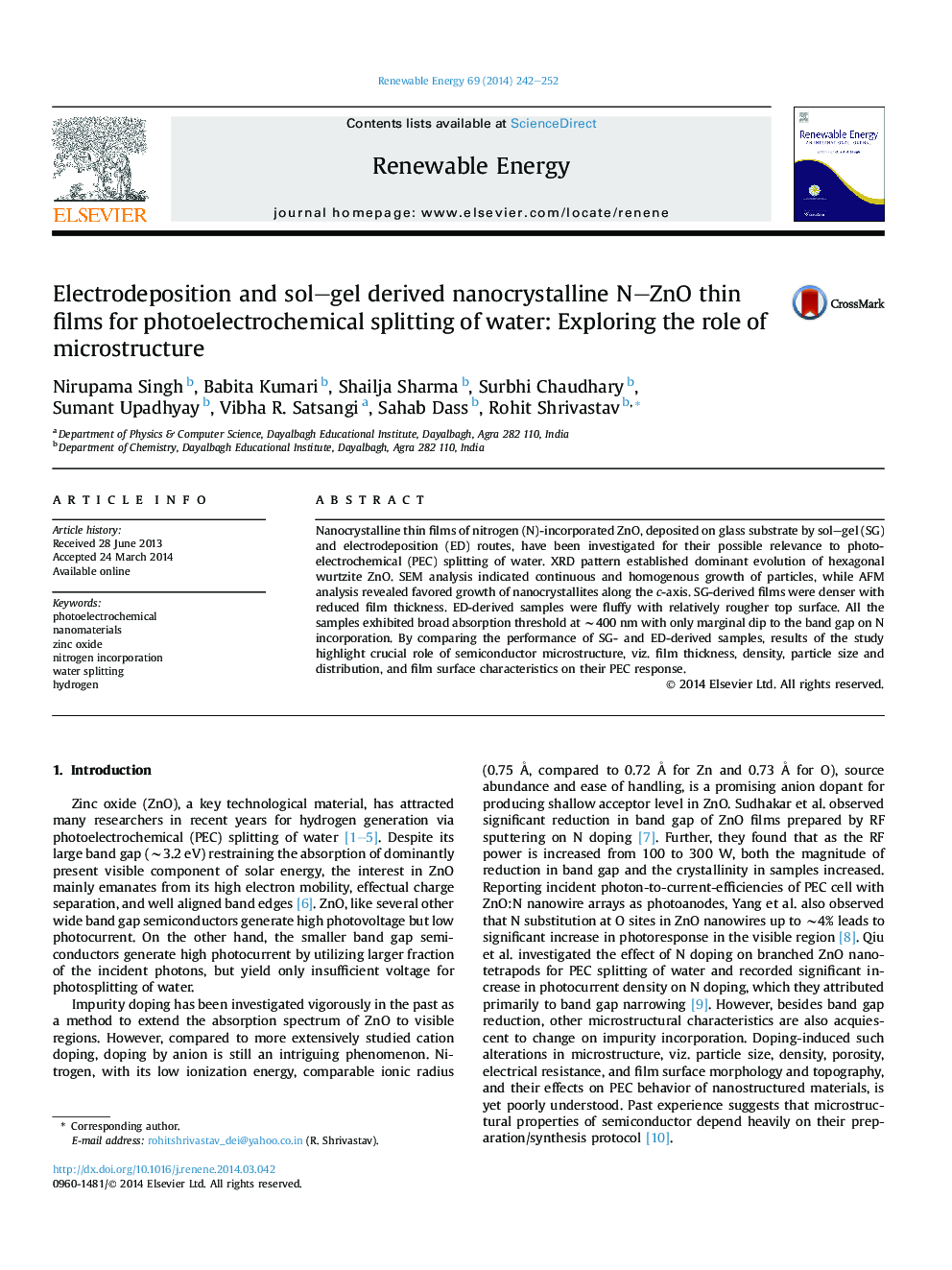| Article ID | Journal | Published Year | Pages | File Type |
|---|---|---|---|---|
| 6768265 | Renewable Energy | 2014 | 11 Pages |
Abstract
Nanocrystalline thin films of nitrogen (N)-incorporated ZnO, deposited on glass substrate by sol-gel (SG) and electrodeposition (ED) routes, have been investigated for their possible relevance to photoelectrochemical (PEC) splitting of water. XRD pattern established dominant evolution of hexagonal wurtzite ZnO. SEM analysis indicated continuous and homogenous growth of particles, while AFM analysis revealed favored growth of nanocrystallites along the c-axis. SG-derived films were denser with reduced film thickness. ED-derived samples were fluffy with relatively rougher top surface. All the samples exhibited broad absorption threshold at â¼400Â nm with only marginal dip to the band gap on N incorporation. By comparing the performance of SG- and ED-derived samples, results of the study highlight crucial role of semiconductor microstructure, viz. film thickness, density, particle size and distribution, and film surface characteristics on their PEC response.
Related Topics
Physical Sciences and Engineering
Energy
Renewable Energy, Sustainability and the Environment
Authors
Nirupama Singh, Babita Kumari, Shailja Sharma, Surbhi Chaudhary, Sumant Upadhyay, Vibha R. Satsangi, Sahab Dass, Rohit Shrivastav,
